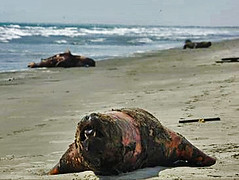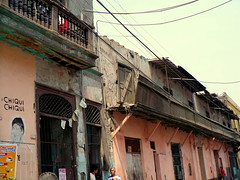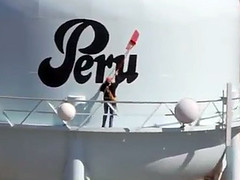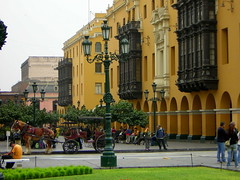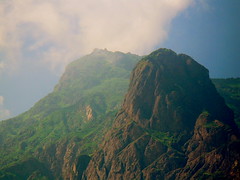Huaca Huantille
Part of the Lima PreColombina series
The Huaca Huantille was one of countless archaeological sites lost among the urban sprawl of Lima, forgotten and neglected. That was until Francis Allison, mayor of the district of Magdalena del Mar where the pyramidal structure is located, decided to try to restore it along with the run down neighbourhood it is located in.

Huaca Huantille awaiting restoration
The adobe structure isn’t as old as some of the others in Lima. This one was built in around 800 or 900 AD by the Ischma, the name by which the civilisation in Lima’s valleys referred to themselves after the fall of the Wari empire, long after the Lima Culture and their structures like Pucllana and the older part of the city of Maranga. In fact, this pyramid complex would have been found on the far outer reaches of Maranga, among green farm land. From the top, on a clear day, you’d be able to see out over the pyramids of Maranga, but also out over Limatambo and other administrative centres. It formed the main temple of the Señorío de Magdalena, a settlement that consisted of five other huacas that have now disappeared.
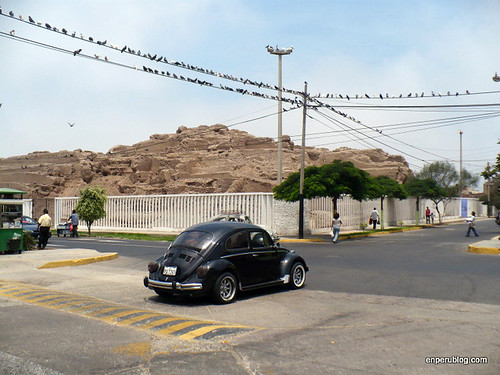
Huaca Huantille
When Lima’s growth boomed, the rural town of Magdalena del Mar became part of a densely populated city, and the Huaca Huantille quickly found itself surrounded by modern buildings, a process that saw the give nearby huacas demolished. A significant part of the Huaca Huantille was destroyed by a brick maker some time in the 60s in search of materials. Later, the invasores arrived, and people started building makeshift shacks on the ruins themselves, similar to those at Mateo Salado. With the collapse of Peru at the hands of an incompetent young president by the name of Alan Garcia, social decay and crime crept into the local community. The area around the Huaca became dangerous and even known as the number one place in Lima to purchase drugs. The Huaca Huantille sat there slowly decaying among slums, addicts and drug dealers.
Since his election, Mayor Allison has done a great job revitalising Magdalena. As part of his plans, the area around Huantille was to be regenerated, and the Huaca itself was to be excavated and turned into a small tourist attraction.
In 2005, families who had illegally built homes on the protected area were removed and rehoused. The site was cleaned up and for the first time the ancient ruin had a perimeter fence built around it for protection. The irreparable damage caused by the brick maker and by those who had lived there became apparent. Of the 11,000m2 the huaca once was, only 1/3rd remained intact. The surrounding huacas have disappeared without trace.

Finds (La Republica)
From May 2006 to June 2007 excavations took place. Five archaeologists and 18 workers have laboured at the site and made impressive finds. Apart from dozens of ceremonial vases, three intact mummies were found wrapped in fine cloth, while 10 other fragmented remains were found nearby.
The work has also greatly benefited the local community. According to statistics from the mayor’s office, crime has reduced in the immediate area by 90%, and is expected to disappear completely with the artistic lighting to be installed at the end of the restoration process. Work is also being done to paint nearby houses, and beautify the area.
The huaca is found on the 12th block of Avenida Castilla in Magdalena del Mar, not far from Magdalena’s plaza and popular market.
A video of a news report can be found below:
···
Update 22 July 2009
In addtion to the 4 mummies found in the Huaca Huantille this April as part of the work to restore it, today archaeologists announce the discovery of nine more bodies.
The latest discoveries are from two distinct periods of time, but are both during the Ichma period, post-Wari and pre-Inca. With the remains were found ceramics, mates burilados, and copper, silver and gold pieces.
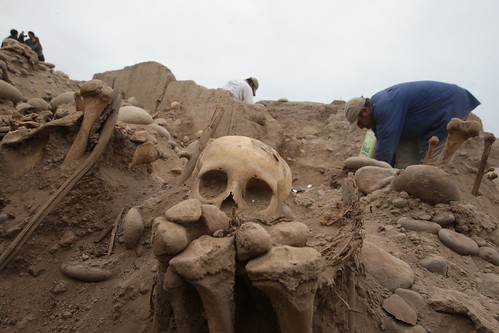
Archaeologists discover pre-Inca cemetery at the Huaca Huantille in the district of Magdalena. Photo: ANDINA/Jack Ramón.
Due to the huge amount of destruction that went on at this ancient city, the tombs show some damage, but relative to their treatment can be their level of preservation is superb.
Tags: Archaeology, crime, francis allison, huaca, huaca huantille, invasiones, lima culture, lima precolombina, magdalena del mar, marange, mummies, ruins, wari



